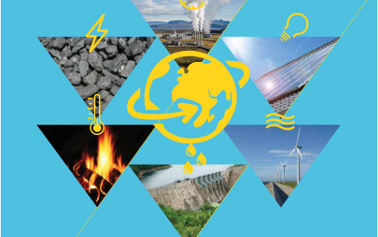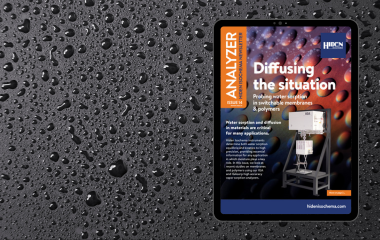Why Green Solvents are Ideal for Environmental Remediation
Green solvents, such as water, supercritical CO₂, ionic liquids, and bio-based solvents, are environmentally friendly alternatives to traditional solvents. They are designed to reduce environmental and health impacts by offering low toxicity, biodegradability, and low volatility, thus supporting sustainable chemical processes and manufacturing practices. This is key in an era of unprecedented environmental concern. Remediation is one avenue by which we can address those issues. It refers to clean-up efforts intended to restore contaminated environments to safe conditions – with a huge focus currently on so-called “forever chemicals”. Green solvents have shown enormous promise in this arena.
However, it’s also important not to overstate the impact of a single solution in the effort to combat climate change. Thus, this blog post will highlight the potential of green solvents in remediation efforts, but will also delve into the distinctions between green chemistry and environmental remediation.
Green Chemistry vs. Environmental Remediation
Green chemistry represents an innovative approach dedicated to designing chemical products and processes that minimize or eliminate the production of hazardous substances. This preventive strategy aims to reduce pollution at its source by creating environmentally benign chemicals and processes. Conversely, environmental remediation focuses on the cleanup of existing pollutants in the environment, involving the treatment, removal, or neutralization of contaminants from soil, water, and air.
Despite their distinct objectives, green solvents serve as a bridge between these fields by providing a safer, more sustainable alternative for various applications, including remediation processes. Derived from renewable resources and engineered to be less toxic and more biodegradable, green solvents can revolutionize traditional remediation methods.
The Role of Green Solvents in Environmental Remediation
Green solvents can play a critical part in environmental remediation through several mechanisms:
- Enhanced Solvent Properties: Green solvents often exhibit superior solubility and selectivity properties, making them effective in extracting and concentrating pollutants from contaminated media. For instance, green solvents, including ionic liquids and supercritical fluids, are known for their tunable properties. They can be tailored to target specific contaminants, improving the efficiency of remediation processes.
- Reduced Toxicity: Traditional solvents used in remediation can pose environmental and health risks. Green solvents, which are non-toxic or less hazardous, mitigate these risks. They ensure the remediation process does not introduce additional pollutants into the environment.
- Biodegradability: Many green solvents are designed to be biodegradable, reducing their long-term environmental impact. This is particularly important in remediation, where residual solvents can persist in the environment. Biodegradable solvents break down into non-toxic byproducts, aligning with sustainable remediation principles.
- Energy Efficiency: Some green solvents, like the supercritical CO2 alternative solvent, enable remediation processes at lower temperatures and pressures than traditional methods, resulting in significant energy savings. This reduces the carbon footprint of remediation activities and lowers operational costs.
Case Studies and Applications
Several case studies highlight the successful application of green solvents in environmental remediation. One notable example is the use of supercritical CO2 in oil spill cleanup. This solvent has demonstrated efficacy in dissolving hydrocarbons at lower pressures and temperatures, which reduces the environmental impact typically associated with traditional solvents. Additionally, it enhances the efficiency of oil recovery, offering a more sustainable and effective solution for managing oil spills.
Another promising application involves the removal of heavy metals using ionic liquids. These green solvents have shown considerable potential in extracting heavy metals from contaminated water and soil. Their tunable properties enable selective binding and removal of specific metals, making the remediation process more targeted and effective. This selective approach not only improves the efficiency of remediation efforts but also minimizes introducing additional contaminants into the environment.
Challenges
Despite the potential benefits, the adoption of green solvents in environmental remediation faces several challenges:
- Cost: The production and purification of green solvents can be more expensive than traditional solvents. Economies of scale and technological advancements are needed to reduce these costs and make green solvents more competitive.
- Performance: While these solvents offer many advantages, their performance in certain remediation applications may not match conventional solvents. Ongoing research is essential to optimise their properties and expand their applicability.
- Regulatory Hurdles: The adoption of new technologies often faces regulatory challenges. Ensuring that green solvents meet regulatory standards and gaining approval for their use in remediation projects can be lengthy.
Green Solvents in Future Remediation Practices
Green solvents represent a promising frontier in environmental remediation. By merging the principles of green chemistry with the practical demands of remediation, these solvents provide a sustainable alternative to conventional methods. Although challenges persist, ongoing research and innovation are poised to surmount these obstacles, paving the way for more environmentally friendly and effective remediation practices. As this field evolves, integrating green solvents into remediation strategies will be crucial for advancing environmental sustainability and safeguarding our planet for future generations.
For more information on the innovative applications and benefits of green solvents, particularly in the context of ionic liquids, visit our green solvents page.
References
- Basics of Green Chemistry. United States Environmental Protection Agency. https://www.epa.gov/greenchemistry/basics-green-chemistry. Updated 2nd May 2024. Accessed 1st July 2024.
- Green Solvent. ScienceDirect. https://www.sciencedirect.com/topics/chemistry/green-solvent. Accessed 1st July 2024.
- Winterton N. The green solvent: a critical perspective. Clean Technologies and Environmental Policy. 2021;23(9):2499-2522. doi:10.1007/s10098-021-021888.


